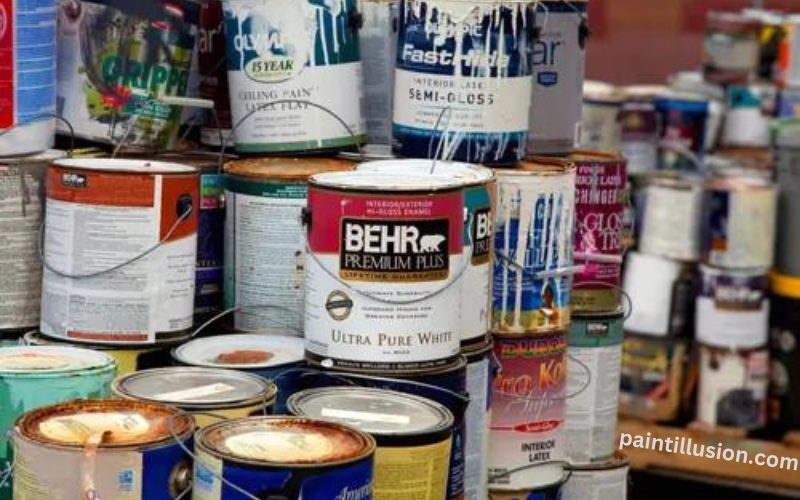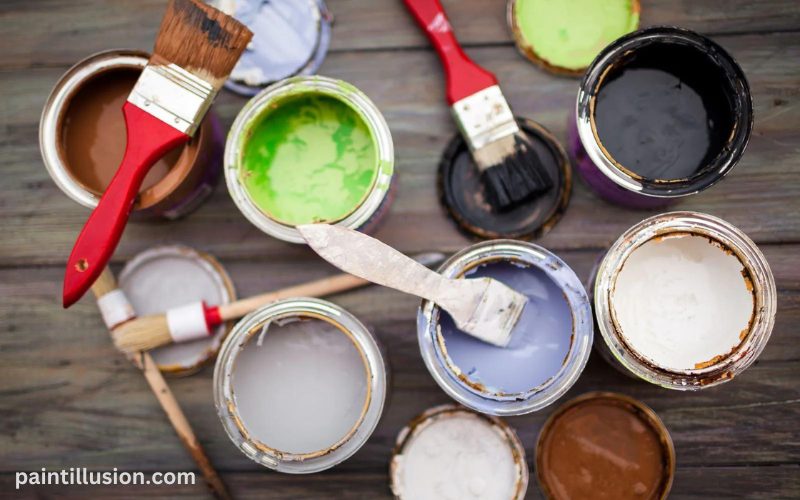Paint is a versatile and essential tool for home improvement projects and creative endeavors. Paint Freeze. However, have you ever wondered if paint can freeze? In this article, we will explore the effects of freezing on paint, discuss how to prevent paint from freezing, and provide tips for storing and using frozen paint effectively. So, let’s dive in and discover the fascinating world of frozen paint!
The Effects of Freezing on Paint
Paint is primarily composed of pigments, binders, solvents, and additives, which work together to create a smooth and durable finish. When exposed to freezing temperatures, the water-based components of paint can expand and contract, leading to irreversible changes in its consistency and performance.
One of the most noticeable effects of freezing on paint is the separation of its components. The pigments and binders may clump together, creating a lumpy texture that is challenging to work with. Additionally, freezing can cause the water in the paint to crystallize, resulting in a grainy and uneven finish when applied.

How to Prevent Paint from Freezing
Prevention is key when it comes to preserving the quality of your paint during cold winter months. Here are some effective strategies to prevent paint from freezing:
- Store paint in a temperature-controlled environment: Keep your paint cans in a climate-controlled area where the temperature remains above freezing. A basement or heated garage is ideal for this purpose.
- Avoid exposing paint to extreme temperatures: Don’t leave paint cans in your car during freezing weather or store them near windows or vents where they can be exposed to cold drafts.
- Insulate paint cans: If you have to store paint in an unheated area, consider insulating the cans with blankets or bubble wrap to provide some insulation against the cold.
- Use insulating materials: For extra protection, consider using insulating materials such as foam coolers or insulated boxes to store your paint cans.
By following these preventive measures, you can ensure that your paint remains in optimal condition and ready for use, even during the coldest months of the year.
Storing Paint During Winter Months
Proper paint storage is crucial for extending its shelf life and maintaining its quality. Here are some helpful tips for storing paint during the winter months:
- Seal the paint can tightly: Ensuring a tight seal on your paint cans is essential to prevent air and moisture from entering. Use a rubber mallet or a block of wood to firmly close the lid and create an airtight seal.
- Store paint cans upside down: Storing your paint cans upside down can create an additional barrier against air and moisture, as the paint will form a seal against the lid. However, this method is only suitable for water-based paints and not recommended for oil-based ones.
- Label your paint cans: Properly labeling your paint cans with the color, brand, and date of purchase will make it easier to identify and use them in the future. It also helps prevent confusion and potential mix-ups.
- Keep paint away from extreme temperatures: Avoid storing paint cans near sources of heat, such as radiators or furnaces, as excessive heat can cause the paint to deteriorate.
By implementing these storage practices, you can ensure that your paint remains in excellent condition, ready for your next project.
Thawing Frozen Paint
If you’ve discovered that your paint has frozen, don’t fret! There are ways to thaw it and bring it back to its original consistency. Here’s how:
- Allow the paint to thaw naturally: Move the frozen paint cans to a warm and dry location, such as a heated room or near a space heater. Let the paint thaw naturally and avoid using any external heat sources, as they can cause the paint to separate or become lumpy.
- Gently stir the paint: Once the paint has thawed, use a wooden paint stirrer or a paint mixer attachment on a drill to gently stir it. This will help redistribute any separated components and restore the paint to its desired consistency.
- Test the paint: Before using the thawed paint on your project, it’s crucial to perform a test patch to ensure that the consistency and color are satisfactory. If the paint appears grainy or clumpy, it may be best to discard it and purchase a fresh can.
By following these thawing techniques, you can salvage frozen paint and avoid unnecessary waste.
Tips for Using Frozen Paint
While using frozen paint may not be ideal, there are situations where it can still be useful. Here are some tips for utilizing frozen paint effectively:
- Use frozen paint for small touch-ups: If you only need a small amount of paint for touch-ups or minor repairs, you can scrape off the frozen layer and use the thawed paint underneath. However, make sure to mix it thoroughly to achieve a consistent texture and color.
- Consider using frozen paint for textured finishes: Frozen paint can be suitable for creating unique textured finishes, such as faux finishes or distressed looks. The grainy texture of the frozen paint can add an interesting dimension to your project.
- Experiment with frozen paint for artistic purposes: If you’re feeling adventurous, frozen paint can be utilized as an art medium. Explore different techniques and experiment with freezing and thawing to achieve captivating effects.
By thinking creatively and exploring alternative uses for frozen paint, you can transform an inconvenience into an opportunity for artistic expression.

Common Misconceptions About Frozen Paint
There are several misconceptions surrounding frozen paint that we should debunk:
- “Frozen paint is ruined and unusable”: While freezing can affect the consistency and performance of paint, it doesn’t necessarily make it unusable. With proper thawing and stirring techniques, frozen paint can often be salvaged.
- “Thawed paint is as good as new”: Thawed paint may not always return to its original condition. Freezing can cause irreversible changes in the paint’s structure, leading to a compromised finish. It’s crucial to test the thawed paint before applying it to your project.
- “All types of paint freeze equally”: Different types of paint can have varying freeze resistance. Water-based paints are more susceptible to freezing than oil-based ones. Always consult the manufacturer’s instructions for specific recommendations.
By dispelling these misconceptions, we can better understand the possibilities and limitations of frozen paint.
Paint Storage Solutions
To ensure the longevity of your paint and protect it from freezing, consider investing in the following paint storage solutions:
- Paint storage cabinets: These cabinets are designed to maintain a stable temperature and humidity level, providing an ideal environment for storing paint.
- Insulated paint lockers: If you have a larger quantity of paint to store, insulated paint lockers can offer a secure and temperature-controlled space.
- Climate-controlled storage units: If you’re a professional painter or have a significant amount of paint to store, renting a climate-controlled storage unit can be a worthwhile investment.
By utilizing these storage solutions, you can maintain the quality of your paint and ensure that it remains usable for future projects.
Freezing Paint for Decorative Purposes
While we have discussed the effects of freezing on paint and how to prevent it, there is also a unique way to utilize freezing for decorative purposes. By deliberately freezing paint, you can create stunning ice-like textures and effects on various surfaces.
To achieve this, mix your desired paint colors with water in a container and place it in a freezer or expose it to freezing temperatures outdoors. As the water in the paint freezes, it will form captivating patterns and textures. Once frozen, you can apply the paint to your chosen surface, such as canvas or wood, to bring a distinctive frozen aesthetic to your artwork or home decor.
Remember, this method is purely for decorative purposes and should not be confused with freezing paint for storage or use on regular projects.
Conclusion
In conclusion, while paint can freeze and be affected by freezing temperatures, it doesn’t necessarily mean the end of its usability. By taking preventive measures, storing paint correctly, and employing proper thawing techniques, you can salvage and utilize frozen paint effectively. Additionally, considering alternative uses for frozen paint can open up new creative possibilities. So, the next time you encounter frozen paint, don’t despair. Embrace the opportunity to experiment, create, and add a touch of frozen magic to your projects!


Appreciating the commitment you put into your site and in depth information you present. It’s nice to come across a blog every once in a while that isn’t the same out of date rehashed information. Excellent read! I’ve saved your site and I’m including your RSS feeds to my Google account.